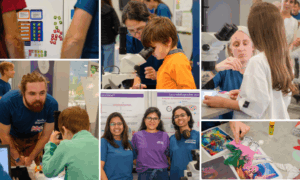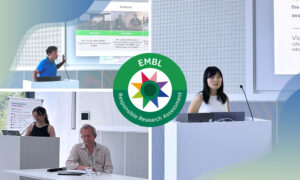
Funding to predict the risk of infectious disease outbreaks
The recent outbreak of SARS-CoV-2 has revealed the devastating consequences of infectious disease outbreaks on a global scale. The far-reaching social and economic impact are still difficult to estimate. One of the lessons learned so far is that better surveillance and prediction tools are needed to identify outbreaks earlier and anticipate their impact.

The Versatile Emerging infectious disease Observatory (VEO) project is a consortium of 20 research partners including EMBL’s European Bioinformatics Institute (EMBL-EBI), which aims to develop a smart detection system for infectious disease outbreaks. The researchers will use laboratory research, field studies, and big data research to monitor and analyse various sources of information. The hope is that, based on these data, they can estimate the risks of an infectious disease outbreak more accurately.
VEO has recently received €15 million funding from the European Commission’s Horizon 2020 Programme to start its research.
Data sources and citizen science
The consortium will investigate the most probable scenarios for the development of an outbreak. The general public will also be involved in the project. They will be asked to collect a range of data, for example mosquito numbers or mosquito species, which would aid the faster detection and control of the mosquito populations.
By linking and analysing various sources of information, the scientists involved in the project hope to identify and classify the risk of disease outbreaks earlier. This will also allow researchers to generate clear information about the potential impact of the outbreak faster, and to develop a warning system.
“The current SARS-CoV-2 pandemic is an unintended example: could we have detected the outbreak of this new virus sooner or estimated the potential impact faster? That is what we need to find out,” says Prof. Marion Koopmans, Head of the Department of Viroscience at Erasmus MC Rotterdam, and Coordinator of the European VEO project.
Outbreak scenarios
The consortium is set to investigate five outbreak scenarios:
1) Disease transmitted by mosquitoes
2) Disease transmitted from animals to humans (zoonosis)
3) Disease due to the release of a pathogen as a result of permafrost or ice caps melting
4) So-called ‘silent’ outbreak. A disease that latently spreads and remains undetected for a long time. Due to the late detection, the impact of such a disease is high, especially in urban areas.
5) Disease X. The epidemic in waiting, which represents the knowledge that a serious international epidemic could be caused by a pathogen currently unknown to cause human disease, and researchers need to come up with (new) ways to detect, control, and treat it.
“The VEO consortium builds on the work of the COMPARE project, a multidisciplinary research network that aims to bring together relevant data to help identify, contain, and mitigate emerging infectious disease and foodborne outbreaks,” explains Guy Cochrane, Group Leader at EMBL-EBI. “By exploring the most likely scenarios, we are preparing ourselves for potential future outbreaks.”
The VEO consortium members are:
- Erasmus University Medical Center, Netherlands
- Technical University of Denmark, Denmark
- Friedrich-Loeffler-Institut, Germany
- European Molecular Biology Laboratory (EMBL)
- Animal and Plant Health Agency, United Kingdom
- Eötvös Loránd University, Hungary
- National Institute for Public Health and the Environment, Netherlands
- National Institute of Ocean Science, France
- Aristotle University of Thessaloniki, Greece
- Academic Medical Center, Netherlands
- Institut Pasteur, France
- Spanish National Research Council (CSIC), Spain
- EPFL, Switzerland
- Statistics Netherlands, Netherlands
- University of Edinburgh, United Kingdom
- University of Bologna, Italy
- University of Padua, Italy
- Uppsala University, Sweden
- University of Helsinki, Finland
- University of Copenhagen, Denmark
This post was originally published on EMBL-EBI News.


